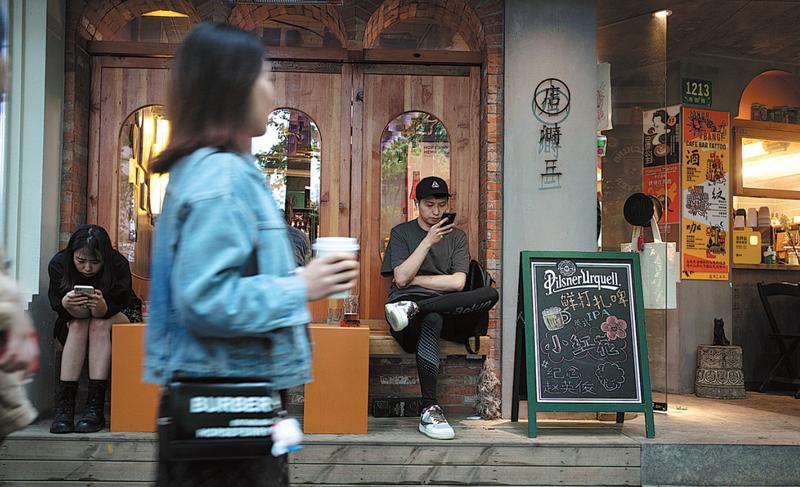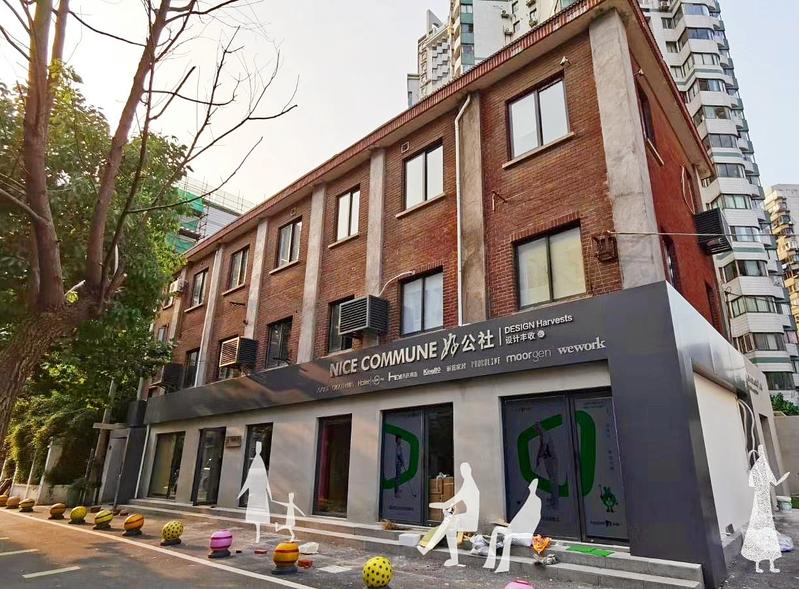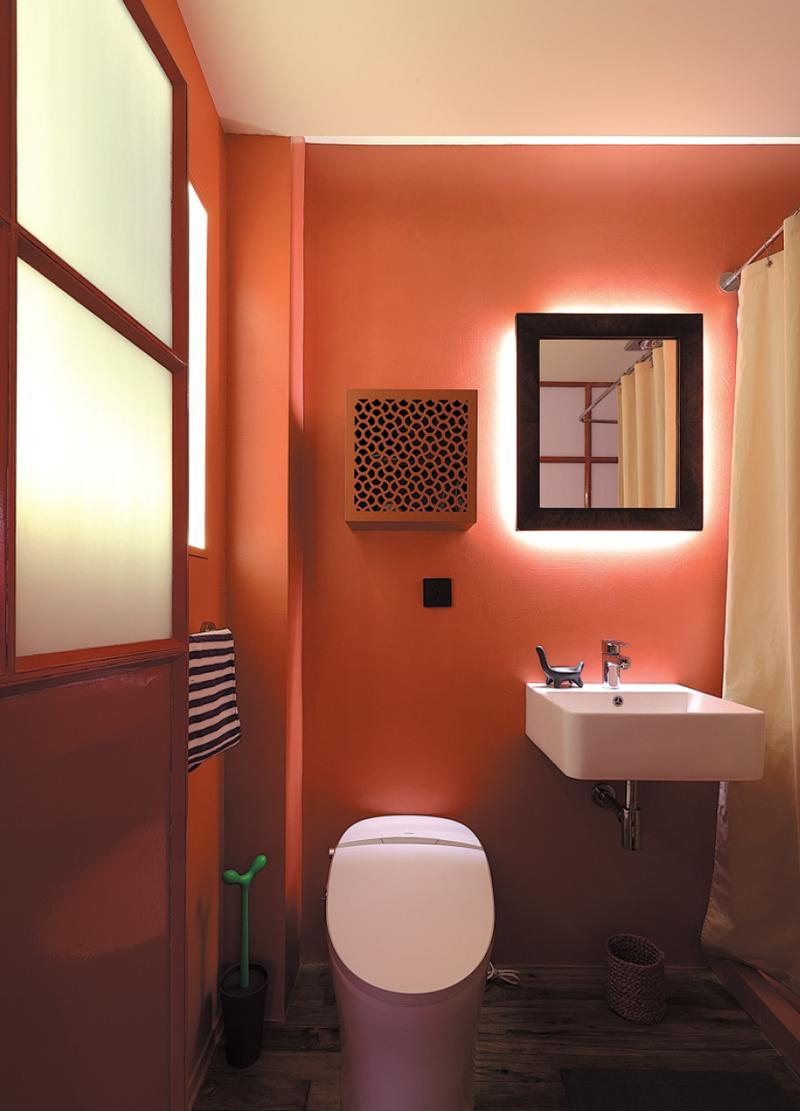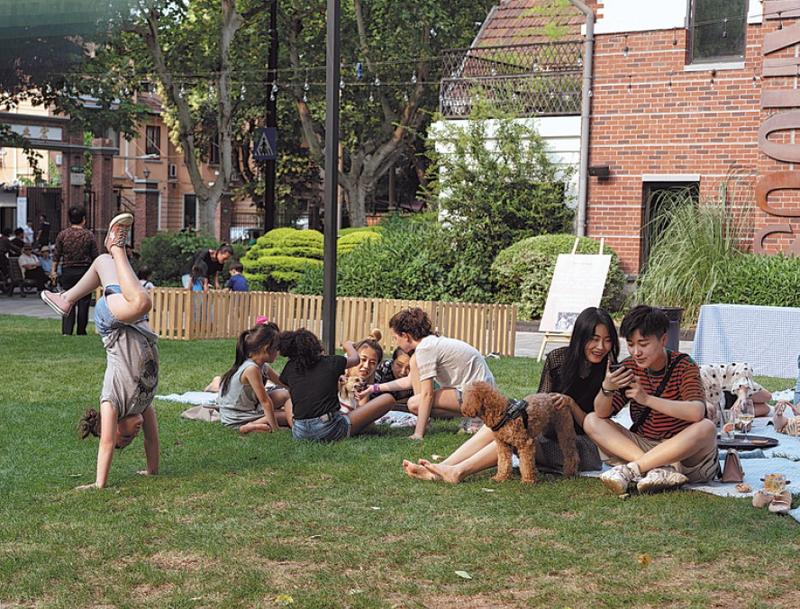Refurbishing old buildings and connecting residents are key elements of urban renewal in Shanghai, Xing Yi reports.
 The century-old Yuyuan Road in Shanghai's Changning district is an example of an urban renewal project that manages to strike a balance between the introduction of new, modern businesses and the preservation of historical buildings. (GAO ERQIANG / CHINA DAILY)
The century-old Yuyuan Road in Shanghai's Changning district is an example of an urban renewal project that manages to strike a balance between the introduction of new, modern businesses and the preservation of historical buildings. (GAO ERQIANG / CHINA DAILY)
Aldo Cibic has lived in Shanghai for about three years, but many people in the city already know of him. The 64-year-old, an established figure in the global design fraternity and one of the founding members of the Italian design and architecture collective Memphis Group, recently made the headlines in local media in Shanghai after he revamped the interiors of his residence, a tiny space nestled in the Anshan No 5 Community, a residential complex in Yangpu district, which was built in the 1990s.
Sporting a colorful, modern and minimalist design, his 34-square-meter studio apartment bears a stark contrast in comparison to thousands of similar apartments in the city that are overcrowded and old.
"I want to do something very simple... something that would give me a sense of home," says Cibic about the thinking behind his renovation concept. "The purpose is to show others that simple materials and designs can create something beautiful in life."
This contrast between the old and new is one that Cibic is immersed in on the professional front as well. As the creative director of NICE 2035(Neighborhood of Innovation, Creativity and Entrepreneurship for 2035), the Italian infuses old communities with contemporary elements while also preserving their old-world charm.
The NICE 2035 project was initiated in 2018 by Lou Yongqi, the former dean of the College of Design and Innovation at Tongji University, in response to the municipal government's Shanghai 2035 master plan, which was published that same year. According to the plan, the city will make a concerted effort to create public spaces for human interactions and carry out urban renewal in old communities.
Lou's idea was to create a "community-supported ecosystem of future living", and the result was the NICE 2035 "living lane"-a 200-meter alley located right beside Cibic's apartment.
Today, the location is a charming blend of the old and new after the project introduced new elements such as artisanal coffee bars, design labs and coworking spaces.
"The urban community has long been seen as merely a place for living and leisure, and therefore a place where innovation outcomes are consumed and not generated," says Lou, who is now the vice-president of Tongji University.
"The project challenges this view and adopts a design-driven approach to building an ecosystem of innovation and entrepreneurship by breaking the 'wall' between the university and the community."
 Aldo Cibic gives his 34-square-meter studio apartment, in a residential complex in Shanghai's Yangpu district, a new look with a colorful, modern and minimalist design. (AMBER LI / FOR CHINA DAILY)
Aldo Cibic gives his 34-square-meter studio apartment, in a residential complex in Shanghai's Yangpu district, a new look with a colorful, modern and minimalist design. (AMBER LI / FOR CHINA DAILY)
Other new additions to the community include the opening of the first Aston Martin design studio outside Britain, the service center for Siping Road subdistrict's social organization, as well as the Shanghai branch of the Fab Lab network, a space that provides tools and knowledge for technical invention.
One of Cibic's major contributions is the revamping of the first floor of an old three-story building in the project lane. Formerly occupied by a fruit store, a hardware-and-tools store and a restaurant, the first floor now houses a shared kitchen, a workspace and meeting rooms for students, residents and startups. Called NICE Commune, the building officially opened in July 2020.
According to Zhang Huaying, Party secretary of the community, the renewal of the alley has made the surroundings tidier and more aesthetically pleasing, as well as allowed residents to learn new things through the many programs offered by various parties.
"I enjoy the fact that people see the value of this community. I've received a lot of feedback about how people realize the importance of the community," says Cibic.
"The integration of young and old residents is vital for the city. We need not construct many new cement buildings that would destroy the community. If you do so, you would lose the value of the social aspect of life."
He describes architecture as being more than just design, but a way of telling stories about activities happening in a place. "Every place has its own soul. I don't believe in styles. I'm interested in how you can improve at different levels. It's not only about the physical beauty, but the beauty of interaction with people."
The project has brought about additional changes through various community programs, such as public cooking, gardening and art, to foster closer ties among residents.
"We see the community and the residents living in it as a source of creativity. We make people-to-people connections through public activities and encourage residents to participate in the community revitalization using their talent," says Lu Zhou, the operation's manager of the commune.
The "living lane" project proved pivotal in learning more about how old communities can be revitalized through collaboration with different parties. Lu's team has since replicated this model to revamp the sidewalks and shops along the Tongji University section on Chifeng Road.
 Aldo Cibic gives his 34-square-meter studio apartment, in a residential complex in Shanghai's Yangpu district, a new look with a colorful, modern and minimalist design. (AMBER LI / FOR CHINA DAILY)
Aldo Cibic gives his 34-square-meter studio apartment, in a residential complex in Shanghai's Yangpu district, a new look with a colorful, modern and minimalist design. (AMBER LI / FOR CHINA DAILY)
Similar projects
Over the past decade, Shanghai has launched various undertakings of a nature similar to the lane project, with the makeover of Yuyuan Road in Changning district being one of the most notable.
The street, first built in 1911, is being seen as an example of urban renewal worth emulating because of how the project developer CREATER has managed to strike a balance between the introduction of new, modern businesses and the preservation of historical buildings by changing their functions.
Li Yongjie, the company chairman, recalls that urban renewal in mid-1990s Shanghai was still at a "very rough stage" and it was only around 2010 when the city hosted the World Expo that the process became more organized. The company participated in the planning of Yuyuan Road's renewal project in 2014, and Li proposed introducing art, creative and cultural industries to the area.
"Simply improving the facade of the historical neighborhood was not enough," he says. "With the increase of incomes, the demand for cultural consumption will rise, too, and we needed to cater to this."
A series of restoration and functional upgrades were soon implemented. For example, a building that the Shanghai Medicine Staff College previously used for teaching purposes was transformed into an indoor market comprising cafes and bistros worthy of social media posts, and shops run by tailors and cobblers who once used the street for their trade. Art installations, more cafes and galleries began to sprout along the street, and the vibrant environment quickly drew entrepreneurs.
Among them is Ma Zhiqiang, who returned to China from Japan after living there for years to set up Whim Coffee two years ago.
"The cultural environment was the main reason I chose this location," says Ma. "When I was a child living in Shanghai, this place was not famous at all, but the renovation of the street has been done well and this has created a good business environment. Business has been brisk despite the outbreak of COVID-19."
 Residents chill out on the lawn at the renovated Yuyuan Road neighborhood. (GAO ERQIANG / CHINA DAILY)
Residents chill out on the lawn at the renovated Yuyuan Road neighborhood. (GAO ERQIANG / CHINA DAILY)
Hot trend
Urban renewal has become a hot topic among real estate developers and architecture studios as Shanghai's development plan now hinges greatly on renovating existing structures rather than building new ones.
In June, Shanghai established the country's largest urban renewal fund worth a whopping 80 billion yuan (US$11.7 billion) that would be channeled toward relevant projects. Two months later, the city published the draft of a 64-article regulation on urban renewal to solicit public opinion.
Qiao Zhengyue, deputy secretary-general of the committee in charge of historical architecture protection within the Architectural Society of Shanghai, says public attitude on urban renewal has changed significantly since 2004.
"There were few events related to urban renewal back then, but this year I've already attended several seminars organized by experts and industry insiders," says Qiao, who has published five books on heritage buildings in Shanghai.
"People now flock to historical buildings when their renovation projects are completed. The city has done a good job of preserving historical architecture while giving old buildings and spaces new life at the same time."
Qiao herself frequents such spaces, among which is the Tsutaya bookstore in the popular Columbia Circle, another heritage spot in Changning district that was once occupied by the Shanghai Institute of Biological Products and closed to the public.
"Historical buildings must be used by the people to be protected," she says. "With the introduction of the new regulation, I hope urban renovation will be carried out in a more orderly manner, and more attention would be given to the residents living in the area where urban renovation will take place."
Echoing Qiao, Cibic says: "I'm touched by the coexistence of differences in Shanghai. Venice has been destroyed by the real estate industry and is now just a city for vacationing. Life there has disappeared. You will lose a lot if you remove the regular people from the equation. I appreciate life in Shanghai more. The community is my living room."
Mei Linhan and Fan Xuehan contributed to the story.
Contact the writer at xingyi@chinadaily.com.cn


